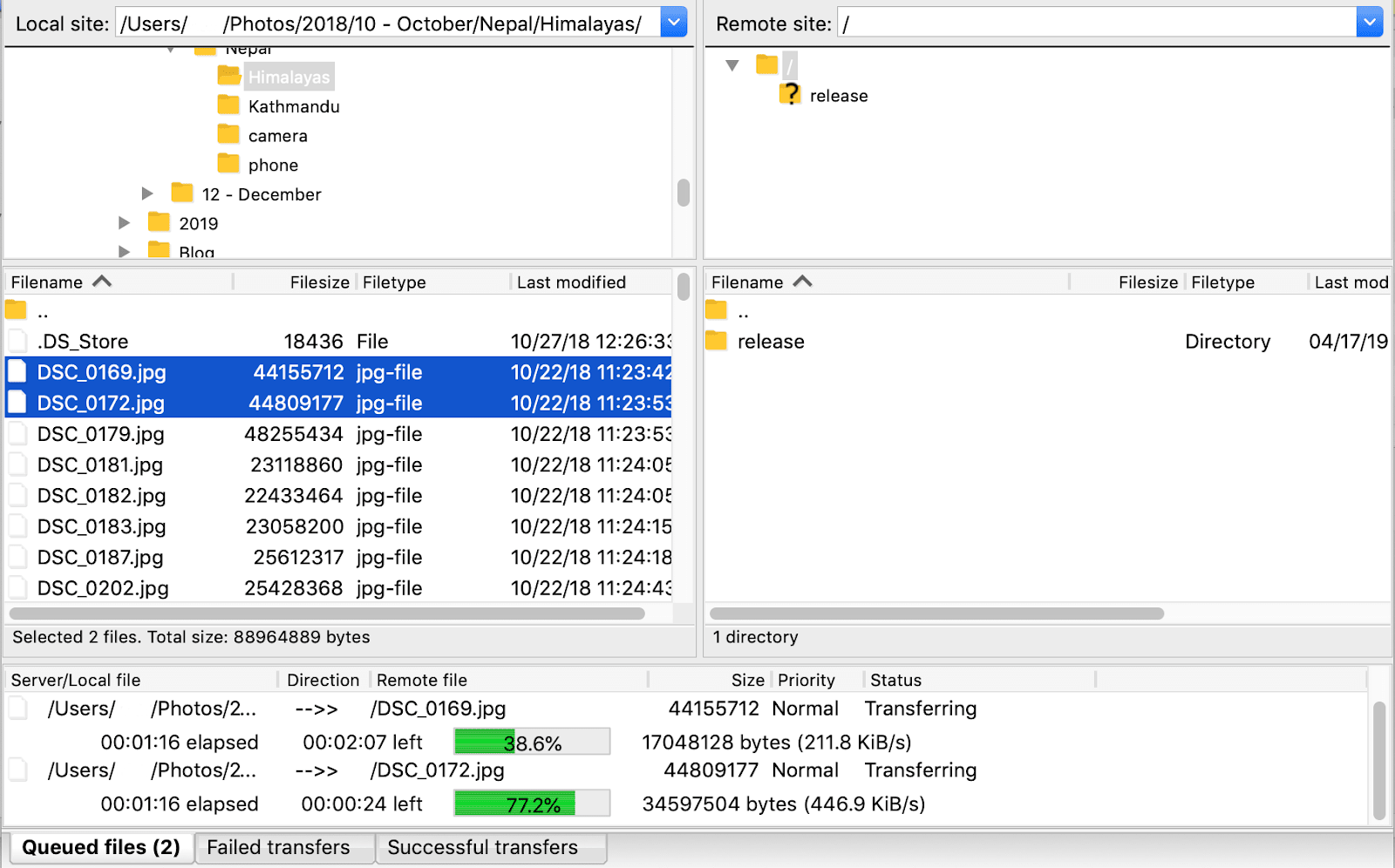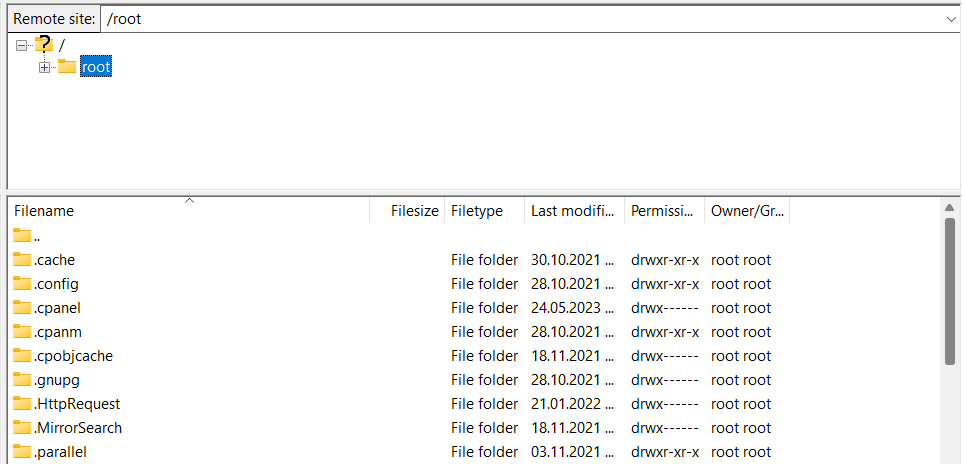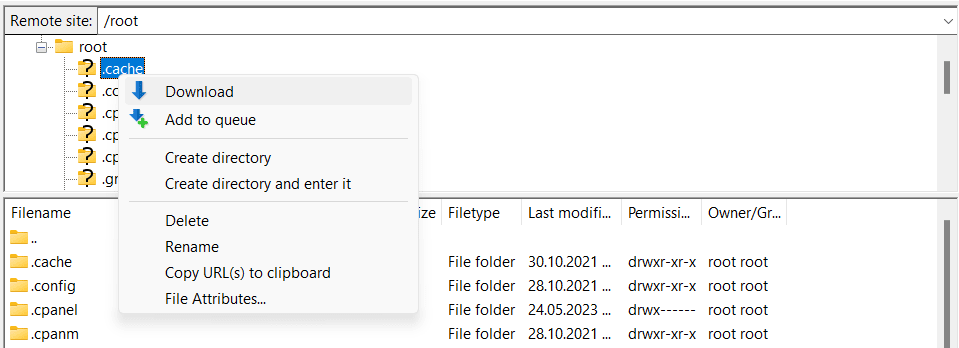What is File Transfer Protocol (FTP) and What Does It Do?
People often use terms like "send file via FTP," "FTP server," and "FTP account." If these terms are unfamiliar and you ask yourself "what is FTP, anyway?" this article will provide some clarity. Learn what file transfer protocol is and the basic concepts in simple terms in the article below.
What is FTP?
The File Transfer Protocol, FTP in short, is a digital handshake facilitating the exchange of files in a networked environment. The internet and related networks rely on many data transfer protocols. A prime example is when a web address is input into the browser; http:// is automatically appended at the beginning. This signifies the usage of HTTP (Hypertext Transfer Protocol), a protocol specifically designed to transport HTML pages and associated elements, such as graphics, multimedia content, scripts, and so forth, from the server to the end user.
Importance of FTP
FTP is engineered with a distinct purpose. It excels in two-way file exchanges between devices, simulating a personal computing experience with server-stored files. Here is an example of what it looks like when you FTP to remote servers:

A remote FTP connection to your server ensures streamlined workflow processes by enabling swift and efficient changes. Moreover, it is designed to accommodate large file sizes and high-volume transfers, which is fundamental for implementing high-resolution media content on your website or executing substantial data migrations.
What Does FTP Do?
When people often ask, “what is FTP?” or “what does FTP do?” the most enlightening response is to spotlight its practical applications in real-world digital operations. Indeed, FTP's versatility extends well beyond its primary function of file transfer between computers, demonstrating its true prowess in a variety of operational scenarios.
Website Administration
FTP is an essential tool for web developers and administrators. Not only does it streamline the transfer of files to and from a web server, but it also facilitates easy content updates and modification. Whether it's uploading new HTML files, adding high-resolution media content, or replacing outdated assets, FTP ensures that your website remains dynamic and current.
Team-Based Projects
FTP stands as an essential tool for regulating file permissions in a team environment. This function is particularly relevant for collaborative projects where granular access control is crucial, ensuring both data confidentiality and easy accessibility.
Preservation & Transfer of Digital Assets
FTP excels when tasked with substantial data movements, showcasing its consistent dependability. This trait is invaluable in scenarios such as executing thorough data archiving or facilitating server transitions. Be it a regular backup procedure or an exhaustive shift to a new server, FTP ensures a smooth and effective data relocation process, reducing the likelihood of operational interruptions.
How Does FTP Work?
Grasping the operation of FTP requires exploring its systematic process. The protocol goes beyond simple file transfers — it coordinates connection initiation, data exchange, and connection termination, thus ensuring your files are safely and efficiently delivered.
Connection Establishment
FTP commences with creating a connection. This stage is often called the handshake. This phase involves establishing two distinct pathways between the client (the originator of the transfer) and the server (the receiver). The first pathway, the control connection, sends command messages, while the second pathway, the data connection, is primed for the actual file transfer.
Data Transfer
Once the connections are safely created, data transmission is initiated. This is where FTP comes into its own. The activities—file upload or download, directory listing or modification, and file permission changes—are determined by the commands sent via the control connection.
Connection Termination
Upon completion of the data transfer, you will arrive at the final stage: connection termination. Once the files have been successfully transferred, and the client no longer requires the server's services, the client sends a termination command via the control connection. Consequently, both the control and data connections are closed, marking the end of the FTP session.
Benefits of FTP
FTP brings a range of advantages to digital communication, contributing significantly to the efficiency and ease of file transfers. Some of these benefits include its ease of use and the flexibility it provides in transferring files.
Easy to Use
One of the defining traits of FTP is its simplicity of operation. The protocol offers an intuitive interface that can be quickly understood, even by individuals who aren't technologically adept. From initiating a connection to transferring files, the process is streamlined and user-friendly, reducing the potential for errors.
Flexible File Transfers
FTP demonstrates a high degree of flexibility when it comes to file transfers. It supports the exchange of a diverse array of file types and sizes from text documents to large multimedia files. Furthermore, FTP enables both uploading and downloading of files, as well as the ability to modify file permissions, demonstrating its adaptability to various file-transfer needs.
What is an FTP Server?
An FTP server is a system that uses FTP to move files across a network. It acts like a storage hub where users can add, access, or share files. It can be a virtual server you rent from a hosting provider to run your website or simply someone's computer. Here’s a review of how you can connect to it.
Connecting an FTP Server Using the FTP-client
A major advantage of FTP lies in the accessibility and ease it brings through the use of FTP clients. These specialized applications streamline the process of connecting and transferring files to FTP servers, specifically facilitating FTP to remote servers. With user-friendly interfaces that mimic typical computer environments, FTP clients transform the technical chore of file transfers into a more intuitive and less technical task.
Take, as an example, an FTP client like FileZilla. It’s a free and easy-to-use application. On the top of the application, you’ll see the fields with credentials. Please enter yours and click on Quickconnect:

You’ll have a quick handshake, as shown below:
Status: Connected to 50.28.37.73
Status: Retrieving directory listing...
Status: Listing directory /root
Status: Directory listing of "/root" successfulAnd you’ll have access to your FTP server:

And it will be the same as your computer, with similar commands. Right-click on the folder, and you can download, delete, rename, and more:

Utilizing FTP clients is highly recommended as they are designed to meet your diverse requirements.
More Secure Data Transfer Protocols
Now that you now more about FTP and can answer the question "what is FTP?" you should be aware of more secure data transfer protocols:
Liquid servers support both SFTP and FTP. When studying SFTP, the What is SSH? article is a great resource for understanding the Secure Shell (SSH) protocol. Because SFTP is not supported on Windows servers, FTPS can be used on them.
The articles above delve into the benefits of those more secure tools for transferring files to you web host. The remainder of this current article will focus explaining the core FTP functionality, although the majority of it often also applies to SFTP and FTPS protocols.
Common FTP/SFTP Commands
Using the FTP & SFTP Commands
When you use File Transfer Protocol (FTP) and Secure File Transfer Protocol (SFTP) to connect to a Windows server, you'll use FTP and SFTP commands, not Windows commands. Those same commands also will also be leveraged in Linux environments.
The FTP/SFTP commands are used to interact with the FTP/SFTP server, regardless of the underlying operating system of the server. Whether the server is running Linux, Unix, or Windows, you will use the same FTP/SFTP commands to navigate, transfer files, manage files, etc.
FTP/SFTP provides a bridge between different systems by providing a standardized set of commands to interact with servers. The commands such as pwd, ls -l, cd, cd .., and others remain the same whether you're using SFTP on a Linux, Unix, or Windows server.
Getting Started with FTP Commands
For a clear understanding, take an actual server as an example. The initial step involves establishing a connection to this server. This can be accomplished with either the FTP or SFTP commands.
Here are the steps to connect to a server via SFTP.
- Open your terminal.
- Type sftp [username]@[server name or IP address]. Using your provided credentials, you would type sftp root@72.52.161.68.
- Enter your password when prompted.
Here is what it will look like using root as a user:
tsagent@liquidweb ~$ sftp root@67.225.163.137
root@67.225.163.137's password:
Connected to 67.225.163.137.
sftp>When considering "what is FTP?" it is important to also think about SFTP (Secure File Transfer Protocol), which is the secure alternative, based on SSH (Secure Shell). SFTP provides an additional layer of security for file transfers. Unlike FTP, SFTP encrypts both data and commands so that passwords and sensitive data elements are not transmitted openly over the network.
FTP Commands for Navigation
Navigation commands in Linux FTP allow users to traverse directories and locate files within the server. These commands provide an effective way to explore the server's file system.
pwd (print working directory)
sftp> pwd
Remote working directory: /rootThe pwd (print working directory) command is employed to exhibit the complete path of the current directory on the remote FTP server. This is a way of knowing where you are in the FTP server's directory structure.
ls -l (listing the contents)
sftp> ls -l
-rw-r--r-- 1 root root 5615 Mar 1 08:52 kcareinstall
drwxr-xr-x 3 root root 4096 May 23 22:32 tmpThe ls -l command is an essential tool for listing the contents of a directory on the remote server. The -l flag provides a long-format listing, which includes additional details such as file permissions, number of links, owner, group, size, and time of the last modification.
cd (change directory)
sftp> cd tmp
sftp> pwd
Remote working directory: /root/tmpThe cd (change directory) command moves through the directory structure. In the example below the action working directory changed to root/tmp.
cd .. (one directory up)
sftp> cd ..
sftp> pwd
Remote working directory: /rootThe .. represents the parent directory of the current directory. So, if you're in a subdirectory and want to return to its parent directory, you can simply type cd ..
FTP Commands for File Transfer
File transfer commands in Linux FTP facilitate the uploading, downloading, and the overall movement of files. These commands provide the flexibility needed to manage file exchanges efficiently.
put (upload file)
First, create a test file on your local machine that you’ll upload. Open a new terminal and paste the following echo command.
echo "Hello, world!" > test.txtIt will create a new file, test.txt, and put the string “Hello, world” inside.
Now, go back to the terminal with SFTP, and use the put command.
sftp> put test.txt
Uploading test.txt to /root/test.txt
test.txt 100% 14 0.1KB/s 00:00To make sure it worked, use the below ls -l command:
sftp> ls -l
-rw-r--r-- 1 root root 5615 Mar 1 08:52 kcareinstall
drwxr-xr-x 3 root root 4096 May 23 22:32 tmp
-rw-r--r-- 1 root root 14 May 24 15:52 test.txt ← Here's the uploaded file.get (download file)
Now, download the same file to your computer using the get command:
sftp> get test.txt
Fetching /root/test.txt to test.txt
Test.txtrename (as a move command)
Use this instance of the rename command to move the test.txt file to the /tmp folder:
sftp> rename test.txt tmp/test.txt
sftp> ls -l
-rw-r--r-- 1 root root 5615 Mar 1 08:52 kcareinstall
drwxr-xr-x 3 root root 4096 May 23 22:32 tmpAs you can see, there is no test.txt anymore. So, go to the /tmp folder and check there:
sftp> cd /tmp
sftp> pwd
Remote working directory: /tmp
sftp> ls -l
-rw-r--r-- 1 root root 14 May 24 15:52 test.txt ← Here's the test file in theFTP Commands for File Management
Linux FTP also includes commands for file management, which enables users to modify file permissions, delete files, or rename files. These commands provide the capability to manage server files effectively.
rename (as a rename command)
sftp> rename test.txt test1.txt
sftp> ls -l
-rw-r--r-- 1 root root 14 May 24 16:23 test1.txtrm (remove file)
sftp> rm test1.txt
Removing /temp/test1.txtmkdir (create folder)
sftp> mkdir test_folder
sftp> ls -l
drwxr-xr-x 2 root root 4096 May 24 16:25 test_folderrmdir (remove folder)
sftp> rmdir test_folder
sftp> ls -l
sftp>
exit (terminate the SFTP session and return to the local shell)
sftp> exit
tsagent@liquidweb ~$Security Risks Associated with FTP
Be careful when somebody asks you to send a file via FTP. FTP is an early protocol and suffers from several security shortcomings that are important to understand. We have documented some of these characteristics while answering the question, "what is FTP?" Many FTP users will come to the conclusion that they should use the more secure transfer functionality found in the popular FTP clients, such as CrossFTP, FileZilla, or Cyberduck on a Mac.
Unencrypted FTP
As previously mentioned, there are benefits to using Secure FTP (SFTP) instead of traditional FTP. A fundamental flaw with FTP is its absence of encryption. The transmission of data in FTP, including elements such as usernames, passwords, or the specific contents of files, is completely unprotected. If the data transmission is intercepted, the contents are entirely accessible and can be read without any difficulty.
When confidential or sensitive information is involved, this weakness can have serious repercussions. On a personal level, transmitting sensitive data, such as private photographs or critical documents, via FTP could expose individuals to risks of identity theft or invasion of privacy.
FTP Brute Force Attacks
FTP also stands vulnerable to another substantial risk: brute force attacks. This form of assault involves a perpetrator trying all possible password combinations until a working password is found Unfortunately, FTP, which requires the transmission of passwords across a network, presents a perfect opportunity for such attacks. This is especially true if passwords are weak, easily guessed, or reused across multiple platforms.
The consequences of brute force attacks can range from unauthorized access to sensitive data, to the defacing of web properties to the misuse of web server as an actor/resource for illicit activities, such as hosting illegal content or distributing spam emails.
Ways to Use Traditional FTP in a More Secure Fashion
Given the security vulnerabilities inherent in traditional FTP, it's essential to put in place several security measures. Here are some strategies to consider:
- Utilize Complex, Unique Passwords: Passwords are your first line of defense against unauthorized access. Using complex and unique passwords makes it significantly more challenging for an attacker to guess your password through brute-force attempts. Using both uppercase and lowercase letters, digits, and special characters makes a password more robust.
- Implement Account Lockout Policies: Adding these policies will help to deter brute force attacks, as the attacker is blocked from making further attempts after reaching the set limit. Depending on the policy specifics, the lockout duration can be temporary or permanent until manually reset.
- Enable Two-Factor Authentication (2FA): This would be a feature addition that offers additional security. Even if your password is somehow compromised, the hacker will still need a second form of verification that can only be accessible from your mobile phone.
- Transition to SFTP: As discussed earlier, Secure FTP (SFTP) provides a much-needed encryption layer to your FTP connections. This type of secure protocol ensures that data is encrypted during transmission, making it unreadable to anyone who might intercept it.
Bottom Line
In summarizing our exploration of the question “what is FTP?” it's essential to consider its present-day applications and implications. This article outlined those for the curious reader and website owner. Despite its simplicity and convenience for data exchange, FTP's inherent security vulnerabilities, primarily due to its age, have resulted in a gradual shift towards more secure alternatives, such as SFTP.
Of course, less technical users with a Liquid Web hosting account have the option to use a file manager that can be accessed from their cPanel or Plesk. As well, InterWorx has its own file manager.
Not a Liquid Web customer yet? Browse our hosting plans to get started today.
Related Articles:
Our Sales and Support teams are available 24 hours by phone or e-mail to assist.
Latest Articles
In-place CentOS 7 upgrades
Read ArticleHow to use kill commands in Linux
Read ArticleChange cPanel password from WebHost Manager (WHM)
Read ArticleChange cPanel password from WebHost Manager (WHM)
Read ArticleChange the root password in WebHost Manager (WHM)
Read Article


